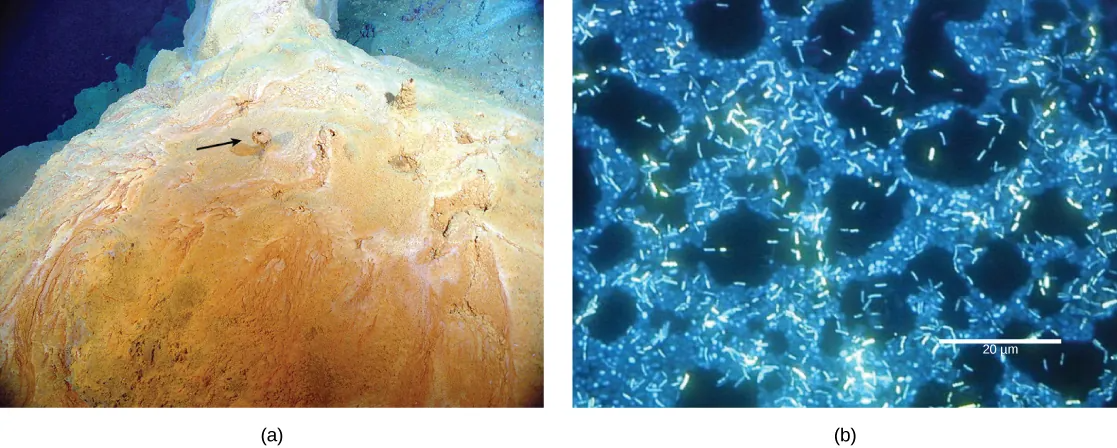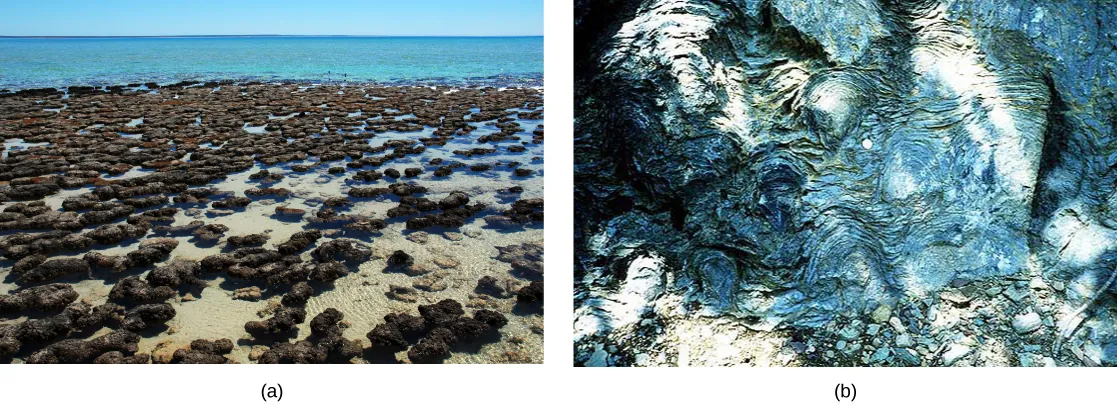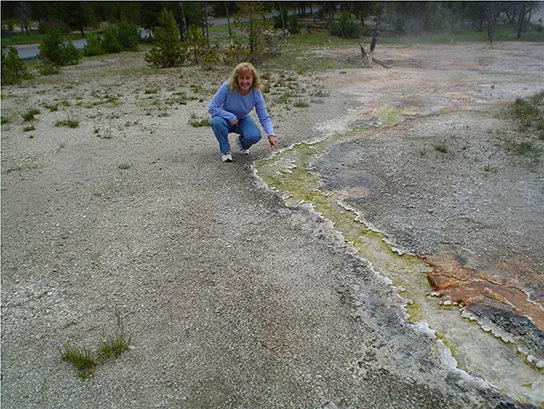22.1 Prokaryotic Diversity
Learning Outcomes
- Describe the evolutionary history of prokaryotes
Prokaryotes are ubiquitous. They cover every imaginable surface where there is sufficient moisture, and they also live on and inside virtually all other living things. In the typical human body, prokaryotic cells outnumber human body cells by about ten to one. They comprise the majority of living things in all ecosystems. Some prokaryotes thrive in environments that are inhospitable for most living things. Prokaryotes recycle nutrients—essential substances (such as carbon and nitrogen)—and they drive the evolution of new ecosystems, some of which are natural and others man-made. Prokaryotes have been on Earth since long before multicellular life appeared. Indeed, eukaryotic cells are thought to be the descendants of ancient prokaryotic communities.
Prokaryotes, the First Inhabitants of Earth
When and where did cellular life begin? What were the conditions on Earth when life began? We now know that prokaryotes were likely the first forms of cellular life on Earth, and they existed for billions of years before plants and animals appeared. The Earth and its moon are dated at about 4.54 billion years in age. This estimate is based on evidence from radiometric dating of meteorite material together with other substrate material from Earth and the moon. Early Earth had a very different atmosphere (contained less molecular oxygen) than it does today and was subjected to strong solar radiation; thus, the first organisms probably would have flourished where they were more protected, such as in the deep ocean or far beneath the surface of the Earth. Strong volcanic activity was common on Earth at this time, so it is likely that these first organisms—the first prokaryotes—were adapted to very high temperatures. Because early Earth was prone to geological upheaval and volcanic eruption, and was subject to bombardment by mutagenic radiation from the sun, the first organisms were prokaryotes that must have withstood these harsh conditions.
Microbial Mats

Microbial mats or large biofilms may represent the earliest forms of prokaryotic life on Earth; there is fossil evidence of their presence starting about 3.5 billion years ago. It is remarkable that cellular life appeared on Earth only a billion years after the Earth itself formed, suggesting that pre-cellular “life” that could replicate itself had evolved much earlier. A microbial mat is a multi-layered sheet of prokaryotes (Figure 22.2) that includes mostly bacteria, but also archaeans. Microbial mats are only a few centimeters thick, and they typically grow where different types of materials interface, mostly on moist surfaces. The various types of prokaryotes that comprise them carry out different metabolic pathways, and that is the reason for their various colors. Prokaryotes in a microbial mat are held together by a glue-like sticky substance that they secrete called extracellular matrix.
The first microbial mats likely obtained their energy from chemicals found near hydrothermal vents. A hydrothermal vent is a breakage or fissure in the Earth’s surface that releases geothermally heated water. With the evolution of photosynthesis about three billion years ago, some prokaryotes in microbial mats came to use a more widely available energy source—sunlight—whereas others were still dependent on chemicals from hydrothermal vents for energy and food.
Research Connection
Chemoautotrophic life near hydrothermal vents
It is difficult to imagine what life near a hydrothermal vent is like. Especially since the conditions are so different from the ones that we, and other organisms we frequently encounter, thrive in.
In this video, science journalist Ed Yong tells you about the discovery of giant tube worms that live in the vicinity of hydrothermal vents, and how a very clever graduate student found out that chemoautotrophic bacteria are key to their survival.
Stromatolites
Fossilized microbial mats represent the earliest record of life on Earth. A stromatolite is a sedimentary structure formed when minerals are precipitated out of water by prokaryotes in a microbial mat (Figure 22.3). Stromatolites form layered rocks made of carbonate or silicate. Although most stromatolites are artifacts from the past, there are places on Earth where stromatolites are still forming. For example, growing stromatolites have been found in the Anza-Borrego Desert State Park in San Diego County, California.

The Ancient Atmosphere
Evidence indicates that during the first two billion years of Earth’s existence, the atmosphere was anoxic, meaning that there was no molecular oxygen. Therefore, only those organisms that can grow without oxygen—anaerobic organisms—were able to live. Autotrophic organisms that convert solar energy into chemical energy are called phototrophs, and they appeared within one billion years of the formation of Earth. Then, cyanobacteria, also known as “blue-green algae,” evolved from these simple phototrophs at least one billion years later. It was the ancestral cyanobacteria (Figure 22.4) that began the “oxygenation” of the atmosphere: Increased atmospheric oxygen allowed the evolution of more efficient O2-utilizing catabolic pathways. It also opened up the land to increased colonization, because some O2 is converted into O3 (ozone) and ozone effectively absorbs the ultraviolet light that could have otherwise caused lethal mutations in DNA. The current evidence suggests that the increase in O2 concentrations allowed the evolution of other life forms.

essential substances for growth, such as carbon and nitrogen
multi-layered sheet of prokaryotes that may include bacteria and archaea
fissure in Earth’s surface that releases geothermally heated water
layered sedimentary structure formed by precipitation of minerals by prokaryotes in microbial mats
without oxygen
refers to organisms that grow without oxygen
organism that is able to make its own food by converting solar energy to chemical energy
bacteria that evolved from early phototrophs and oxygenated the atmosphere; also known as blue-green algae

